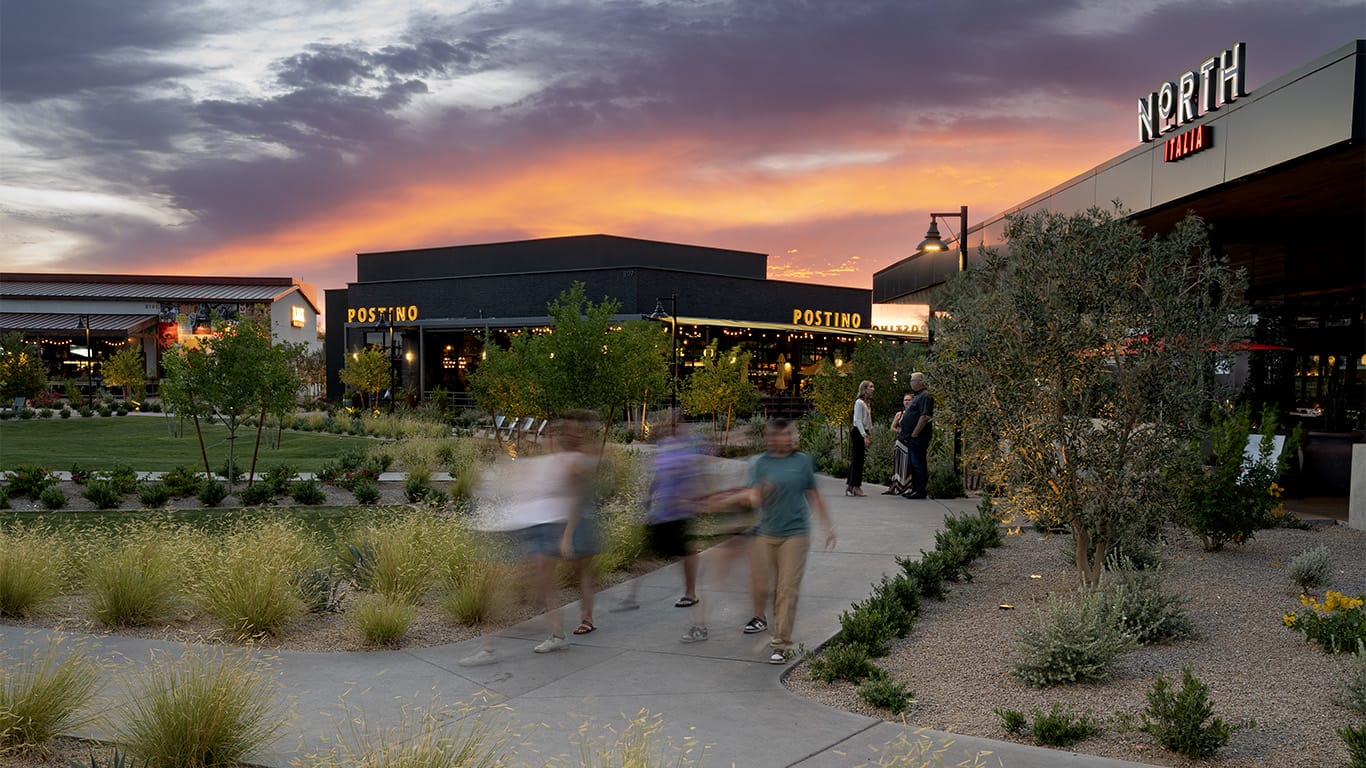Anyone who’s played Jenga knows that one shaky or misplaced wooden block can send a tower tumbling down. The right pieces in optimal places, however, can build solid, high-reaching structures. The West Valley has long recognized and prepared for exponential growth throughout the region. Much like players in a Jenga game, infrastructure, transportation and housing must all work in tandem to support expansion, and West Valley leadership is playing a steady game.
DEEPER DIVE: How the West Valley technology sector is booming
INDUSTRY INSIGHTS: Want more news like this? Get our free newsletter here
All roads lead to Prop 479
“Roads? Where we’re going, we don’t need roads” is one of the most well-known Doc Brown quotes from “Back to the Future,” but it doesn’t ring true for the West Valley (at least not anytime soon).
According to Maricopa Association of Governments (MAG) projections, the West Valley’s population is expected to surge past 2 million residents by 2030. That’s a lot of drivers in need of many roads leading to and from the new housing and employment developments occurring throughout the West Valley.
Enter Prop 479, the continuation of an existing, dedicated half-cent sales tax in Maricopa County to fund transportation.
“Proposition 479 is going to have a tremendous impact, not just for Surprise, but for the entire West Valley,” says Kevin Sartor, mayor of Surprise. “There’s so much growth happening out here, and infrastructure has to keep up.”
When compared to a 2050 no-build scenario, the transportation improvements included in the Prop 479 investment plan are projected to offer multiple benefits, including reducing average daily traffic delays by more than 51,000 person-hours across key corridors, according to MAG.
“One of the biggest regional benefits is State Route 30,” Sartor says. “Even though it’s not in Surprise, SR 30 will help a lot of our residents who commute east to Phoenix or downtown by relieving pressure on the I-10 and improving overall traffic flow. It’s a big deal for quality of life.”
Beyond providing freeway relief, Prop 479 investments include strategic interchange upgrades, arterial street improvements and expanded transit options.
“If we’re talking about Surprise specifically, one of our top priorities is the US 60 and Loop 303 interchange,” Sartor explains. “Our city’s growth is happening in the north and west. Right now, there’s only one main road — 163rd Avenue — serving those areas. Proposition 479 helps us fund key upgrades like a grade separation at 163rd and US 60 (so drivers aren’t stuck waiting on train traffic) and a new interchange at 155th Avenue and Loop 303.”
TSMC impact
Infrastructure investment is vital when companies like Taiwan Semiconductor Manufacturing Company (TSMC) land in the West Valley, bringing in thousands of new employment opportunities — in the case of TSMC, 6,000 direct, high-tech jobs.
“TSMC has created a new orbit for employers, developers and the entire manufacturing ecosystem,” says Jason Morris, founding partner of Withey Morris Baugh.
Of course, part of the semiconductor manufacturing giant’s “orbit” includes Halo Vista. The self-contained $7 billion community, anchored by TSMC’s $165 billion investment, has been described as a “city within a city” and is expected to support up to 70,000 jobs over time through direct employment and related development in the surrounding area.
“Halo Vista is blessed with a blank canvas, but also with the incredible momentum provided by TSMC,” Morris says. “Just as TSMC represents the future of manufacturing, Halo Vista is looking at every aspect of its development as an opportunity to be cutting edge. This innovation starts with the infrastructure and includes every aspect of the master plan — from the water and sewer to the roadways, buildings and the end-users.”
As for Halo Vista’s relationship to West Valley’s infrastructure and transportation corridors, once State Route 30 (under Prop 479 funding) is built, it will link Loop 303 to Loop 202, offering more direct routes and freeing up driver dependency on the I-10.
In Surprise, Mayor Sartor’s mention of prioritizing US 60 and Loop 303 interchange focuses on accessibility to and from one of its city epicenters: Village at Prasada. Prasada serves as the retail centerpiece of a massive 3,355-acre master‑planned community, with homes, parks, schools and job centers.
“The Loop 303 was a huge catalyst in shaping Surprise into what it is today,” Sartor explains. “While other cities along the corridor built out with logistics and warehouse space, Surprise focused on retail, restaurants and places for people to gather. Prasada is now the number one power center in Arizona, and it’s not just serving Surprise, it’s a regional draw.”




